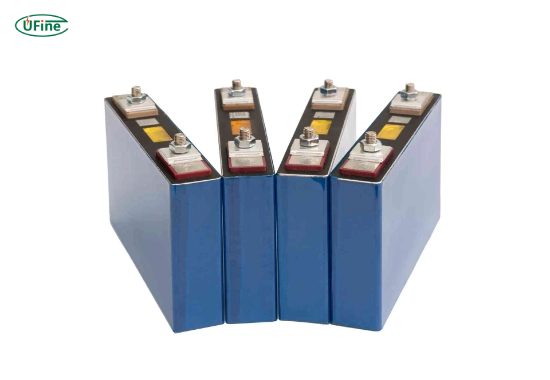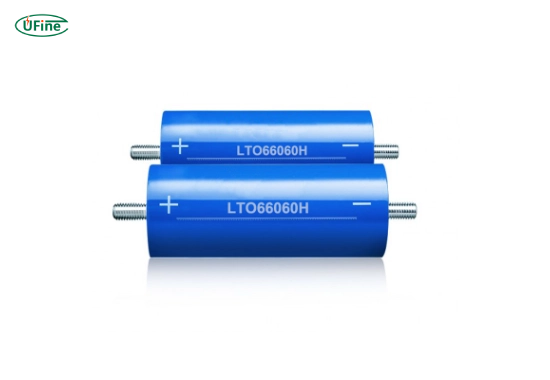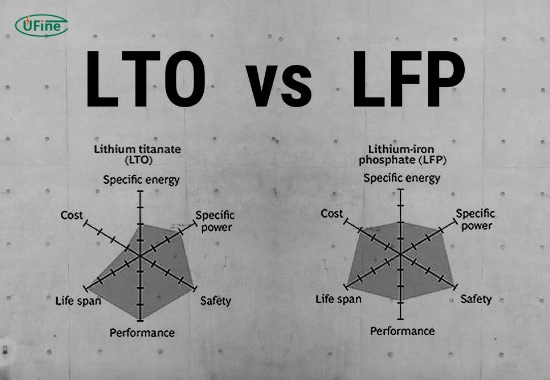In the rapidly evolving world of energy storage, lithium iron phosphate (LFP) and lithium titanate oxide (LTO) batteries have emerged as prominent technologies. Both types of batteries offer unique advantages and drawbacks, making them suitable for different applications. This article comprehensively compares LFP and LTO batteries, exploring their chemistry, performance, lifespan, safety, and cost-effectiveness. By the end of this piece, you will have a clearer understanding of which battery technology may be best for your specific needs.
Part 1. What is an LFP battery?
LFP batteries, or lithium iron phosphate batteries, are a type of lithium-ion battery known for their stability and safety. They utilize lithium iron phosphate as the cathode material and graphite as the anode. This combination results in a battery with a lower energy density than other lithium-ion chemistries but excels in thermal stability and longevity.
Key Characteristics of LFP Batteries
- Safety: LFP batteries are less prone to thermal runaway, making them safer than other lithium-ion batteries. This characteristic is especially crucial in applications where safety is paramount.
- Cycle Life: These batteries typically offer a longer cycle life, often exceeding 2000 cycles under optimal conditions. This means they can be charged and discharged many times without significant degradation.
- Energy Density: LFP batteries have lower energy density (around 90-160 Wh/kg) but compensate with their durability. This makes them suitable for applications where weight is not the primary concern.
- Cost: LFP batteries are generally more affordable than other lithium-ion options due to the abundance of iron and phosphate materials. This cost-effectiveness makes them attractive for large-scale applications.
- Environmental Impact: The materials used in LFP batteries are more environmentally friendly compared to those in some other lithium-ion technologies. Iron and phosphate are abundant and non-toxic.
Part 2. What is an LTO battery?
LTO batteries, or lithium titanate oxide batteries, utilize lithium titanate as their anode material. This unique composition allows for rapid charge and discharge rates, making LTO batteries suitable for quick energy delivery applications.
Key Characteristics of LTO Batteries
- Ultra-Fast Charging: One of the standout features of LTO batteries is their ability to charge in minutes rather than hours. This makes them ideal for applications where time is critical, such as public transportation.
- Cycle Life: LTO batteries can achieve an impressive cycle life of over 10,000 cycles, making them ideal for applications with frequent cycling. Their longevity reduces the need for frequent replacements.
- Temperature Range: These batteries perform well in extreme hot and cold temperatures. This adaptability makes them suitable for various environmental conditions.
- Energy Density: However, the energy density of LTO batteries is lower than that of LFP batteries, typically around 70-90 Wh/kg. This means they require more space for the same amount of stored energy.
- Safety Features: LTO batteries also exhibit good thermal stability but can be more sensitive to overcharging if not appropriately managed. Proper battery management systems are crucial to ensure safety.
Part 3. Key differences between LFP and LTO batteries
Examining their key characteristics is essential better to understand the differences between LFP and LTO batteries. Below are the primary distinctions that set these two technologies apart:
- Energy Density: LFP batteries offer a higher energy density (90 – 160 Wh/kg) than LTO batteries (70 – 90 Wh/kg). This means LFP batteries can store more energy in a smaller space, making them advantageous for applications where size and weight are critical.
- Cycle Life: LTO batteries have a significantly longer cycle life, exceeding 10,000 cycles, while LFP batteries typically last around 2000 cycles. This longevity makes LTO more suitable for applications requiring frequent charging and discharging.
- Charging Speed: LFP batteries support moderate charging speeds, which may take several hours to charge fully. In contrast, LTO batteries excel in ultra-fast charging capabilities, allowing them to recharge in minutes, ideal for time-sensitive applications.
- Temperature Range: LFP batteries perform well in moderate temperature conditions, whereas LTO batteries are designed to operate effectively across a wide range of extreme temperatures. This versatility makes LTO suitable for more challenging environments.
- Safety: Both battery types exhibit good safety features, but LFP batteries have higher thermal stability, reducing the risk of overheating or fires. LTO batteries also provide good thermal stability but require careful management to avoid overcharging.
- Cost: Generally, LFP batteries have a lower initial cost due to the abundance of materials used in their construction. On the other hand, LTO batteries come with a higher upfront cost because of the specialized materials involved.
- Environmental Impact: The materials used in LFP batteries are considered more eco-friendly due to their abundance and non-toxic nature. Conversely, the materials used in LTO batteries are less common, which may raise concerns about sustainability.
Here’s a comparison table summarizing these differences:
| Feature | LFP Batteries | LTO Batteries |
|---|---|---|
| Energy Density | 90 – 160 Wh/kg | 70 – 90 Wh/kg |
| Cycle Life | ~2000 cycles | >10,000 cycles |
| Charging Speed | Moderate | Ultra-fast |
| Temperature Range | Moderate | Wide range (extreme conditions) |
| Safety | High thermal stability | Good thermal stability |
| Cost | Lower initial cost | Higher initial cost |
| Environmental Impact | More eco-friendly materials | Less common materials |
Part 4. Comparing LFP and LTO batteries: pros and cons
Advantages of LFP Batteries
- High Thermal Stability: The inherent stability reduces risks associated with overheating.
- Longer Cycle Life: Suitable for applications with less frequent charging cycles.
- Cost-Effective: Lower initial costs make them accessible for various industries.
- Good Performance in Moderate Temperatures: Reliable performance in typical operating conditions.
Disadvantages of LFP Batteries
- Lower Energy Density: Requires more space compared to other technologies.
- Slower Charge Rates: Not ideal for applications requiring rapid energy replenishment.
Advantages of LTO Batteries
- Ultra-Fast Charging: Ideal for applications where time is critical.
- Extremely Long Cycle Life: Reduces long-term replacement costs.
- Excellent Performance in Extreme Temperatures: Versatile across various environments.
Disadvantages of LTO Batteries
- Higher Initial Costs: The upfront investment can be a barrier for some users.
- Lower Energy Density Compared to LFPs: Requires more physical space for installation.
Part 5. Applications of LFP batteries and LTO batteries
LFP batteries:
- Electric Vehicles (EVs): Many EV manufacturers prefer LFP to balance cost and performance. The safety features make it a popular choice among consumers concerned about battery fires.
- Energy Storage Systems (ESS): Ideal for residential and commercial energy storage solutions where safety and longevity are priorities. They can store excess solar energy for later use.
- Power Tools: These are commonly used in power tools due to their safety features and longer lifespan compared to traditional lead-acid batteries.
- Grid Storage Solutions: Used in renewable energy systems to store energy generated from wind or solar power, providing stability to the grid during peak demand times.
LTO batteries:
- Public Transport: Buses and trams benefit from the quick charging capabilities, allowing vehicles to recharge during short layovers or stops.
- Grid Energy Storage: Useful for stabilizing power grids due to their long cycle life; they can absorb excess energy during low demand periods and release it during peak demand times.
- Military Applications: They are often used in military equipment where rapid deployment is crucial; their durability ensures reliability in demanding environments.
- Backup Power Systems: Ideal for critical backup power systems requiring quick response during outages or emergencies.
Part 6. FAQs
-
What are the main differences between LFP and LTO batteries?
The main differences are their energy density, cycle life, charging speed, and cost. While LFP has higher energy density and lower initial costs, LTO excels in fast charging and longevity. -
Which battery lasts longer?
Generally, LTO batteries last significantly longer than LFP batteries, with lifespans exceeding 10,000 cycles compared to around 2000 cycles for LFP. -
Are LFP batteries safer than other lithium-ion types?
LFP batteries are safer due to their thermal stability and lower risk of thermal runaway than other lithium-ion chemistries. -
Can I use an LTO battery in an electric vehicle?
Yes, LTO batteries can be used in electric vehicles where rapid charging is essential; however, they are less common than LFP or other lithium-ion types due to cost considerations. -
Which battery type is more cost-effective?
While LFP batteries have a lower initial cost, LTOs may prove more cost-effective over time due to their longer lifespan and reduced replacement frequency.
Related Tags:
More Articles

Decoding Lithium Battery Cost: What Drives Pricing?
Lithium battery costs impact many industries. This in-depth pricing analysis explores key factors, price trends, and the future outlook.
Liquid Metal Battery vs Lithium Battery: Comparative Analysis
Liquid metal vs. lithium batteries: Compare features, applications, pros, cons, cost, and future prospects in this in-depth analysis.
Understanding Lipo Batteries: Capacity, Lifespan & More
Learn everything about Lipo batteries—capacity, energy density, cycle life, and more. Optimize performance and avoid common pitfalls with this in-depth guide.
What Is a U1 Battery?
Learn about U1 battery size, types, key differences, and maintenance tips. Discover whether AGM or lithium U1 batteries are better and how to choose.
SLI Batteries Explained: Types, Uses, and How They Work
Discover what an SLI battery is, how it works, its types, key differences from AGM, EFB, and deep-cycle batteries, and essential maintenance tips.






